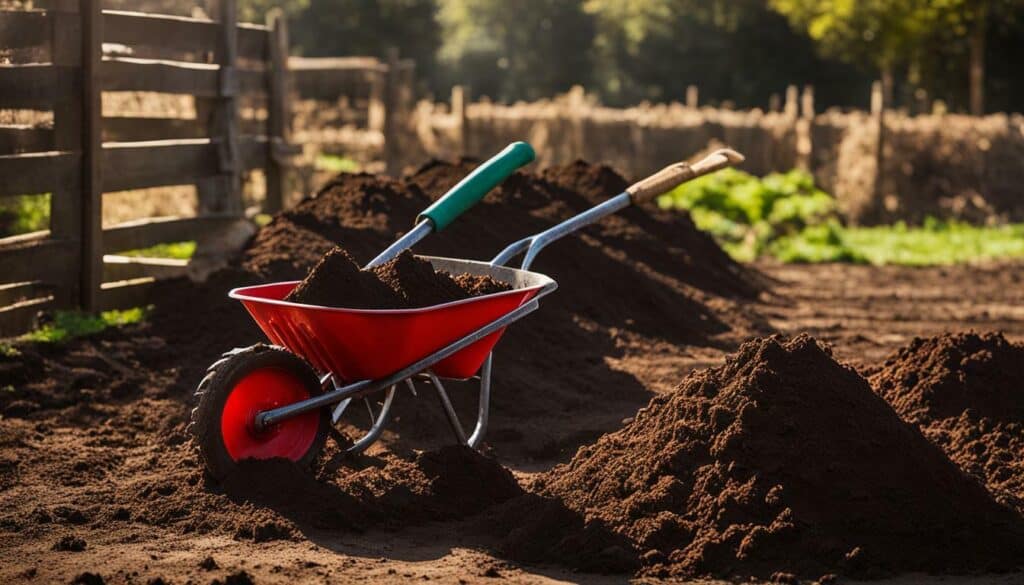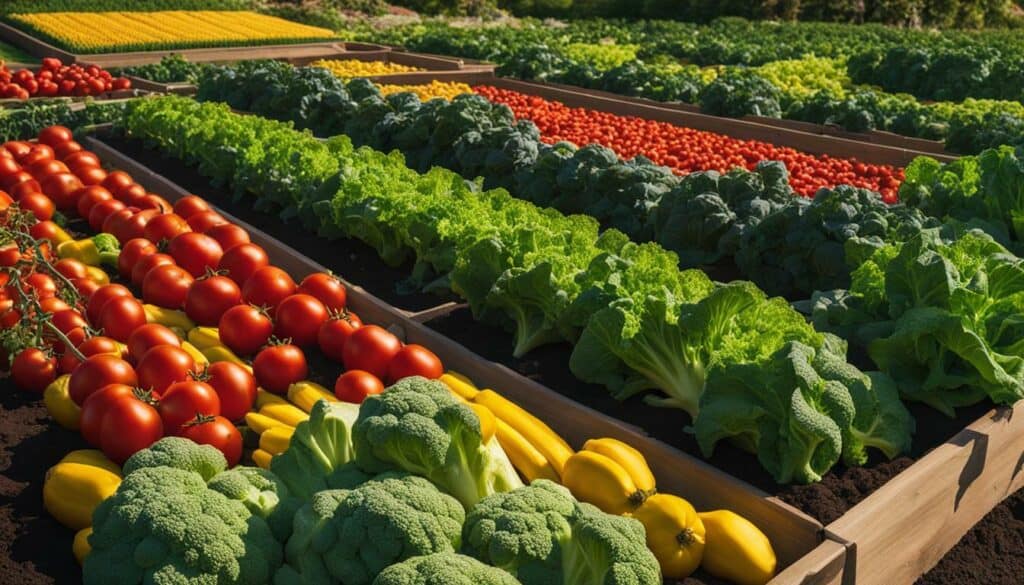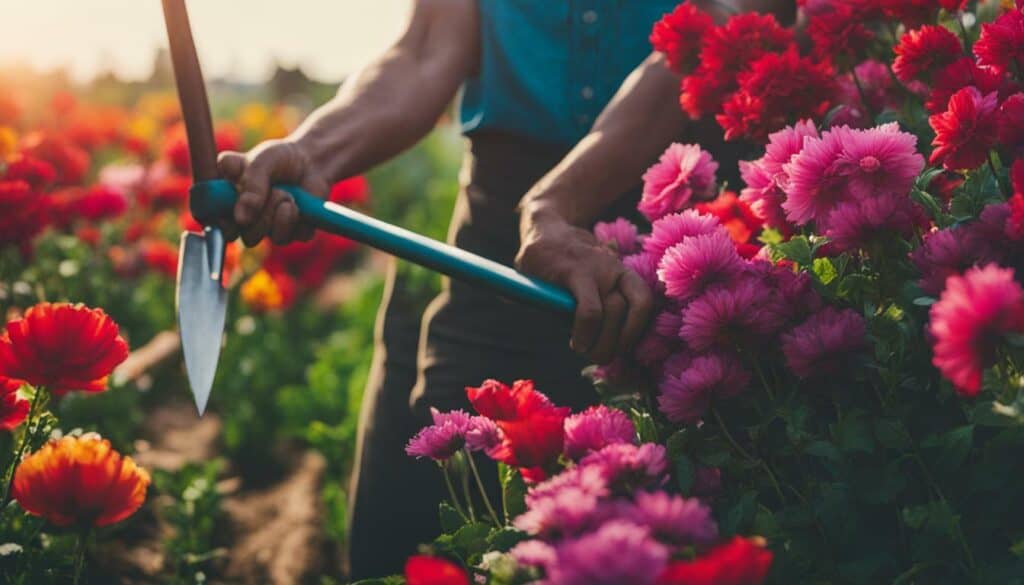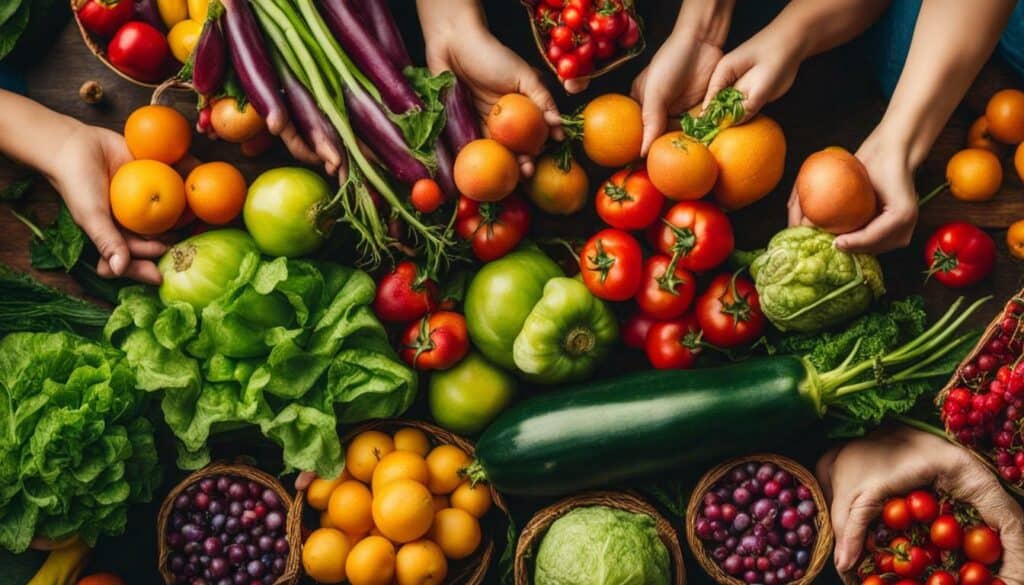If you’re a beginner looking to start a garden, here are some easy steps and tips to help you get started. The first step is to choose the best location for your garden, ideally a spot that gets at least 6-8 hours of sun each day. It’s also important to have a water source nearby. Next, consider adding a raised bed to your garden, which is easy to construct and allows you to grow a lot of food in a small space. Set up a watering system, such as a battery-operated timer connected to a hose, to make watering your garden more efficient. When adding soil to your raised bed, use a mix of compost, peat moss or coconut coir, and vermiculite. It’s also important to have your soil tested annually to ensure its health. Find a planting guide specific to your area to determine what to plant and when. Plant what you like to eat and make sure to water your plants regularly. Spend time in your garden each day to observe and address any issues that arise. Finally, harvest and enjoy the fruits of your labor. Gardening can provide numerous health benefits and is a rewarding and fulfilling activity.
Key Takeaways:
- The best location for your garden is a spot that gets at least 6-8 hours of sun each day and has a nearby water source.
- Adding a raised bed to your garden allows you to grow a lot of food in a small space and is easy to construct.
- Set up a watering system, such as a battery-operated timer connected to a hose, to make watering your garden more efficient.
- Use a mix of compost, peat moss or coconut coir, and vermiculite when adding soil to your raised bed.
- Find a planting guide specific to your area to determine what to plant and when.
- Spend time in your garden each day to observe and address any issues that arise.
- Gardening can provide numerous health benefits and is a rewarding and fulfilling activity.
Choosing the Right Location for Your Garden
First, choose a convenient location for your garden that gets at least 6-8 hours of sun each day. This will ensure that your plants thrive and produce a bountiful harvest. It’s also important to have a water source nearby, whether it’s a hose or a watering can, to make watering your garden a quick and easy task.
Consider adding a raised bed to your garden. It’s a great way to start small and expand as you gain experience. Raised beds also provide better drainage and soil structure, resulting in healthier plants and a higher yield. When choosing a location for your raised bed, make sure it’s easily visible so you don’t forget about it.
| Factors to Consider | Details |
|---|---|
| Sun Exposure | Look for an area that gets at least 6-8 hours of sunlight. |
| Convenient Location | Choose a spot that you’ll see often and is easily accessible. |
Fill your raised bed with a mix of compost, peat moss or coconut coir, and vermiculite. This will provide your plants with the nutrients they need to grow strong and healthy. Additionally, this mix will provide proper drainage, preventing your plants from getting waterlogged and developing root rot.
Use a planting guide specific to your area to know what and when to plant. This will ensure that your garden is always filled with healthy, thriving plants. Plant what you like to eat, so you can enjoy the fruits of your labor. Spend time in your garden daily, observing and maintaining your plants.
Finally, enjoy the fruits of your labor by harvesting and incorporating your home-grown produce into your meals. There’s nothing more rewarding than savoring the taste of food that you grew yourself.
Building a Raised Bed for Efficient Gardening
Consider adding a raised bed, which can be easily constructed and allows for efficient gardening. To begin, choose a location for your raised bed that receives at least 6-8 hours of sun per day and is easily accessible. Once you have determined the location, it is time to construct the raised bed.
| Step | Description |
|---|---|
| 1 | Choose the size of your raised bed. A 4×8-foot size is recommended for a beginner. |
| 2 | Determine the depth of your raised bed. A depth of 12-18 inches is ideal for most vegetables. |
| 3 | Construct the frame of your raised bed using wood or recycled materials. |
| 4 | Add soil mix to your raised bed. The mix should consist of equal parts of compost, peat moss or coconut coir, and vermiculite. |
A watering system, such as a battery-operated timer connected to a soaker hose or drip line, should be set up for convenience. This will ensure proper hydration for your vegetables without the need for manual watering.
When selecting the vegetables to plant, follow a planting guide for your area to determine the best time and varieties to grow. Additionally, choose vegetables that you enjoy eating to make the most of your garden’s bounty.
Regularly spend time in the garden to observe and address any issues that may arise. This includes checking for pests, pruning plants, and ensuring proper hydration.

Finally, when it comes time to harvest your vegetables, don’t be afraid to get creative in the kitchen! Incorporating home-grown produce into meals is a great way to enjoy the fruits of your labor and get the most out of your garden.
Setting Up a Watering System for Proper Hydration
Set up a watering system, such as a battery-operated timer connected to a soaker hose or drip line, to ensure your plants receive proper hydration. Choosing a convenient location for your garden is the first step in creating an effective watering system. Ensure that it receives at least 6-8 hours of sunlight per day and has access to a nearby water source. Raised beds or containers can make gardening easier and provide an opportunity to create a custom-made watering system.
Once your garden location has been established, set up an automatic watering system with a soaker hose or drip line connected to a battery-operated timer. This will help ensure your plants receive consistent and adequate moisture without requiring you to manually water them daily. Using a timer will also help save water and reduce the risk of over or under watering.
After setting up your watering system, it’s important to add nutrient-rich soil to your raised bed or containers. Mix in compost, peat moss or coconut coir, and vermiculite to create an ideal growing environment. Regular testing of your soil is also important, along with the addition of organic fertilizer when necessary.
By following these steps, you can ensure that your plants have the proper hydration they need to grow and thrive. Choose plants that are suitable for your growing area and that you enjoy eating. Spend time in your garden each day to observe growth and address any issues that may arise. Finally, harvest and enjoy the fruits of your labor by incorporating your homegrown produce into your meals.
Preparing the Soil for Planting
Adding soil to your raised bed is a crucial step in creating a successful garden. It is recommended to use a mix of compost, peat moss or coconut coir, and vermiculite to create the perfect combination for optimal plant growth.
Compost is important for providing organic matter and nutrients to the soil, while peat moss or coconut coir helps retain moisture and improves soil aeration. Vermiculite, which is a natural mineral, helps with water retention and provides aeration to the soil.
When adding soil to your raised bed, you should layer the compost, peat moss or coconut coir, and vermiculite in equal parts, ensuring they are mixed well together. This will help create a nutrient-rich growing environment for your plants.
It is also important to have the soil tested each year to determine its health and identify any necessary adjustments to the soil mix.

| Material | Quantity |
|---|---|
| Compost | 2 parts |
| Peat Moss or Coconut Coir | 2 parts |
| Vermiculite | 2 parts |
Choosing and Planting the Right Vegetables
Consult a planting guide specific to your area to determine what and when to plant, and choose vegetables you enjoy eating. This will ensure a successful and enjoyable gardening experience. If you are new to gardening, start with easy-to-grow vegetables such as tomatoes, lettuce, and peppers. They are great for beginners and can be grown in both raised beds and containers.
The next step is to prepare the soil for planting. Mix compost, peat moss or coconut coir, and vermiculite to make a nutrient-rich growing environment. Fill your raised bed or containers with the soil mix and water thoroughly to settle the soil.
When planting your vegetables, follow the recommended planting distance to give your plants enough space to grow. Plant seeds or seedlings according to the package instructions. Make sure to water your plants immediately after planting to help reduce transplant shock.
As your plants grow, keep an eye on them for any signs of pests or disease. Use organic methods to control pests and diseases such as handpicking or using natural sprays. Water regularly and fertilize as needed to keep your plants healthy and thriving.
Finally, when it’s time to harvest your vegetables, pick them when they are ripe and enjoy them in your favorite dishes. There’s nothing more rewarding than eating fresh produce that you grew yourself.

Following these tips will help you get started on your vegetable gardening journey and enjoy the fresh produce you grow at home.
Daily Garden Care and Observation
Spend time in your garden each day, observing and addressing any problems that arise. Daily garden care promotes healthy plant growth and helps prevent issues from becoming bigger problems. Check your plants for pests, disease, and signs of nutrient deficiencies, such as yellowing leaves or stunted growth.
Regularly watering your plants is crucial for their health. Test the soil moisture level by sticking your finger about an inch into the soil. If it feels dry, it’s time to water. You can set up an automatic watering system with a battery-operated timer connected to a soaker hose or drip line. Just be sure not to overwater, as this can drown your plants and promote disease.
As your plants grow, prune any dead or damaged leaves and stems to promote healthy growth. You can also train climbing plants, such as tomatoes or cucumbers, to grow up a trellis or stake for better air circulation and higher yields.
Make sure to also check for signs of overgrowth or overcrowding. Some plants, such as mint or strawberries, can quickly take over a garden if not kept in check. Regularly harvesting your vegetables also promotes healthy growth and encourages continuous production.
Observation is key to addressing any problems early on. If you notice any issues, such as yellowing leaves or chewed up plants, try to identify the cause and take action accordingly. In some cases, removing the affected plant entirely may be necessary to prevent the spread of disease.
By spending just a few minutes each day caring for and observing your garden, you can enjoy healthy, thriving plants and a bountiful harvest.

Harvesting and Enjoying the Fruits of Your Labor
Finally, harvest and enjoy the fruits of your labor, incorporating them into your meals. The satisfaction of growing your own food and seeing it on your plate is unparalleled. Harvest your crops when they are young and pick them often to encourage more production. Some plants, like herbs, can be harvested continuously throughout the season.
When it’s time to harvest, cut vegetables at the base of the stem or use a garden fork to gently lift root crops out of the soil. Be sure to handle fruits and vegetables with care to prevent bruising or damage. Wash them thoroughly before consuming or storing.
As you enjoy the bounty of your garden, don’t be afraid to get creative in the kitchen. Try new recipes or experiment with different cooking techniques. Incorporating fresh, home-grown produce into your meals not only enhances the flavor but also provides a wealth of nutrients.

Gardening is not just a way to provide fresh and nutritious food for yourself and your family. It also offers numerous health benefits, including stress relief, physical activity, and exposure to vitamin D from the sun.
Additionally, gardening can create a sense of connection to the natural world and the environment. By growing your own food, you are contributing to a more sustainable future and reducing your carbon footprint.
Overall, gardening is a rewarding hobby that can provide both physical and mental benefits, as well as delicious and healthy food for your table. So, start your garden today and enjoy the many rewards it has to offer.
Conclusion
Gardening provides numerous health benefits and can be a rewarding and enjoyable hobby. By following the steps and tips outlined in this article, you can create a beautiful and thriving garden in your space. Selecting the right location, building a raised bed, setting up a efficient watering system, preparing healthy soil, choosing the right vegetables, and daily observation and care are all essential elements to the success of your garden.
One of the many benefits of gardening is the opportunity to spend time outside and generate essential vitamin D. It’s also a great way to stay active and reduce stress. And let’s not forget about the tasty reward of harvesting your own produce and incorporating it into your meals. Whether you have a small balcony or a large yard, gardening can be a fulfilling and unique experience for everyone.
So go ahead and break ground on your garden today. Immerse yourself in the process of watching your garden grow and relish in the satisfaction of enjoying your very own home-grown vegetables. Remember, gardening is a hobby with many benefits, so enjoy the journey!
What Are Some Easy Steps and Tips for Beginners to Start Planting a Garden?
Are you a beginner looking to start planting a garden? Here are some easy steps and beginner’s tips for planting a garden. Start by selecting an appropriate spot with ample sunlight and fertile soil. Consider the type of plants you want to grow and plan the layout accordingly. Prepare the soil by removing weeds and adding compost. Choose plants suitable for your climate and water them regularly. Remember to provide adequate protection against pests and diseases. With these beginner’s tips for planting a garden, you’ll be on your way to creating a beautiful and thriving garden.
What Are the Signs That Indicate It’s the Right Time to Start a Garden?
Knowing when to start a garden is crucial for a successful gardening experience. One sign is the arrival of spring, as warmer temperatures create an ideal environment for plants to thrive. Another indicator is when frost is no longer a threat, ensuring your delicate plants won’t be harmed. Additionally, pay attention to soil conditions and prepare it accordingly. Lastly, if you have the time and commitment to sustain a garden, and the desire to take up this rewarding hobby, then it’s definitely the right time to start a garden.
FAQ
Q: Can I start a garden if I’m a beginner?
A: Absolutely! This beginner’s guide will provide you with easy steps and tips to help you start your own garden.
Q: How do I choose the right location for my garden?
A: It’s important to choose a location that gets at least 6-8 hours of sun each day. Consider convenience and accessibility when selecting a spot for your garden.
Q: What are the benefits of building a raised bed?
A: Building a raised bed allows for efficient gardening and makes it easier to control soil quality and drainage.
Q: How can I set up a watering system for my garden?
A: You can use a battery-operated timer connected to a soaker hose or drip line to ensure your plants receive proper hydration.
Q: What soil should I use for my raised bed?
A: Use a mix of compost, peat moss or coconut coir, and vermiculite to create nutrient-rich soil for your raised bed.
Q: How do I choose and plant the right vegetables?
A: Consult a planting guide specific to your area to determine what and when to plant. Choose vegetables you enjoy eating and consider starting with seeds or seedlings depending on your level of experience.
Q: How often should I spend time in my garden?
A: It’s recommended to spend time in your garden each day, observing and addressing any problems that arise.
Q: How do I harvest and enjoy the fruits of my labor?
A: Harvest your home-grown produce when it’s ripe and incorporate them into your meals for a delicious and rewarding experience.
Q: What are the benefits of gardening?
A: Gardening provides numerous health benefits and can be a rewarding and enjoyable hobby.
Source Links
- https://www.npr.org/2020/04/17/837300800/this-is-a-good-time-to-start-a-garden-heres-how
- https://growinginthegarden.com/gardening-for-beginners-how-to-start-a-garden-in-8-simple-steps/
- https://commonsensehome.com/start-a-garden/
- https://www.wikihow.com/Start-a-Garden
- https://www.almanac.com/where-put-vegetable-garden
- https://www.gardensthatmatter.com/choose-garden-location/
- https://morningchores.com/vegetable-garden-location/
- https://www.almanac.com/content/how-build-raised-garden-bed
- https://www.gardenary.com/blog/how-to-build-a-raised-garden-bed-for-just-100
- https://joegardener.com/podcast/raised-bed-gardening-pt-1/
- https://www.gardeners.com/how-to/how-to-choose-a-watering-system/8747.html
- https://housefulofhandmade.com/install-drip-watering-system-garden/
- https://www.familyhandyman.com/project/how-to-install-an-irrigation-system-in-your-yard/
- https://www.almanac.com/soil-preparation-how-do-you-prepare-garden-soil-planting
- https://www.homedepot.com/c/ai/how-to-prepare-soil-for-a-garden/9ba683603be9fa5395fab90dd5b2e0e
- https://www.planetnatural.com/garden-soil/
- https://www.almanac.com/vegetable-gardening-for-beginners
- https://getbusygardening.com/what-vegetables-to-grow/
- https://growagoodlife.com/choosing-vegetables-grow/
- https://growinginthegarden.com/6-tasks-to-do-in-your-garden-every-day/
- https://www.bhg.com/gardening/yard/garden-care/ten-steps-to-beginning-a-garden/
- https://food52.com/blog/27431-how-to-maintain-a-vegetable-garden
- https://www.gardencityharvest.org/the-real-dirt-garden-city-harvest-blog/2015/08/05/enjoy-the-fruits-of-your-labor-harvesting-basics
- https://www.sandiegouniontribune.com/lifestyle/home-and-garden/story/2020-07-11/garden-mastery-enjoy-the-fruits-and-the-vegetables-of-your-labor
- https://cottageatthecrossroads.com/enjoying-the-fruits-of-our-labor/
- https://growingourown.wordpress.com/6-conclusion/
- https://www.daleharvey.com/in-the-garden/articles-of-interest/PACIFIC STEEL SUTTON PARK/Sutton Park Primary School Gardening Project/Page 5 – Conclusion.html





Leave a Reply